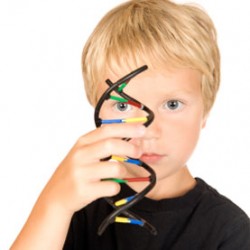 William Schultz, Doctoral student, Minnesota School of Professional Psychology
William Schultz, Doctoral student, Minnesota School of Professional Psychology
A recent piece by CNN health presented the “truth” about eight depression myths. The author of the piece, Dr. Iliades, pointed out some facts. It is true that depression may sometimes be difficult to treat. It is also true that depression does not always present as sadness. However, Dr. Iliades presented more fiction than fact. See the full article here.
First, he characterized depression as a “real disease” which implies a biological, bottom-up pathology, such as cancer. A common public understanding is that depression is a “brain disease” caused by a “chemical imbalance”. This is misleading. Many medical diseases, like cancer or diabetes, can be identified with bio-markers and clinical tests. But in mental health, “we don’t have rigorously tested, reproducible, clinically actionably biomarkers for any psychiatric disorder (Insel, 2014, p. 395) and there is little scientific evidence that depression is caused by a chemical imbalance (Schultz, 2015). Psychological disorders are different than typical biological diseases. This distinction is important. Thinking of psychological disorders as biological diseases can have negative effects on how well clients believe they will do in treatment and this, in turn, can have negative effects on client’s clinical outcomes (Lebowitz, 2014).
Second, Dr. Iliades argued that it’s a myth antidepressants don’t work. This depends on what he means by “work”. Well established evidence shows that antidepressants do not treat depression better than placebos in a clinically significant way (Moncrieff & Kirsch, 2015).
Third, Dr. Iliades asserted that shock therapy (ECT) may sound scary but it isn’t. In fact, he claimed it’s “86% effective.” That’s not right. The available evidence suggests only 10 – 35% of patients will experience enduring positive outcomes from ECT treatment (Fosse & Read, 2013). Even this percentage range is highly dubious because it’s based on studies that do not have a placebo group. When ECT is compared to simulated ECT, there’s no significant difference in enduring treatment effects (Fosse & Read, 2013). And ECT is scary. Researchers don’t know how it works to produce its purported therapeutic effects (McCall, Andrade, & Sienaert, 2014) and it has a variety of significant negative effects on the brain (van Daalen‐Smith, Adam, Breggin, & LeFrançois, 2014).
Fourth. Dr. Iliades claimed that antidepressants are safe. Safe is a relative term. Antidepressants have a large variety of negative side-effects, from negative effects on the heart to sexual dysfunction. Some researchers have argued that these side-effects outweigh the benefits (Andrews, Thomson, Amstadter, & Neale, 2012).
Fifth, Dr. Iliades argued that antidepressants combined with psychotherapy is probably the best treatment for individuals with depression. But research has shown that psychotherapy alone performs as well as psychotherapy plus medication (Khan, Faucett, Lichtenberg, Kirsch, & Brown, 2012). As Kirsch (2014) put it, “When different treatments are equally effective, choice should be based on risk and harm, and of all of these treatments, antidepressant drugs are the riskiest and most harmful” (p. 132).
Finally, Dr. Iliades breezed through a section on the difference between depression and bereavement. The distinction he mentioned was vigorously debated by experts during the creation of the DSM-V (Wakefield & First, 2012). Needless to say, it is impossible for Dr. Iliades to give justice to the debate, much less to pronounce what feelings and experiences are and are not acceptable after the death of a loved one.
The truth about depression is our culture is far too quick to reach for a pill and far too slow to consider the social and psychological challenges underlying psychological disorders.
References
Andrews, P. W., Thomson Jr, J. A., Amstadter, A., & Neale, M. C. (2012). Primum Non Nocere: An Evolutionary Analysis of Whether Antidepressants Do More Harm than Good. Frontiers in Psychology, 3, 117, 1-19.
Fosse, R., & Read, J. (2013). Electroconvulsive treatment: hypotheses about mechanisms of action. Frontiers in Psychiatry, 4, 94, 1-10.
Insel, T. R. (2014). The NIMH research domain criteria (RDoC) project: precision medicine for psychiatry. American Journal of Psychiatry, 171(4), 395-397.
Khan, A., Faucett, J., Lichtenberg, P., Kirsch, I., & Brown, W. A. (2012). A systematic review of comparative efficacy of treatments and controls for depression. PLoS One, 7(7), e41778.
Kirsch, I. (2014). Antidepressants and the placebo effect. Zeitschrift für Psychologie, 222(3), 128-134.
Lebowitz, M. S. (2014). Biological conceptualizations of mental disorders among affected individuals: A review of correlates and consequences. Clinical Psychology: Science and Practice, 21(1), 67-83.
McCall, W. V., Andrade, C., & Sienaert, P. (2014). Searching for the Mechanism (s) of ECT’s Therapeutic Effect. The Journal of ECT, 30(2), 87-89.
Moncrieff, J., & Kirsch, I. (2015). Empirically derived criteria cast doubt on the clinical significance of antidepressant-placebo differences. Contemporary Clinical Trials, 43, 60-62.
Schultz, W. (2015). The chemical imbalance hypothesis: an evaluation of the evidence. Ethical Human Psychology and Psychiatry, 17(1).
van Daalen‐Smith, C., Adam, S., Breggin, P., & LeFrançois, B. A. (2014). The Utmost Discretion: How Presumed Prudence Leaves Children Susceptible to Electroshock. Children & Society, 28(3), 205-217.
Wakefield, J. C., & First, M. B. (2012). Validity of the bereavement exclusion to major depression: does the empirical evidence support the proposal to eliminate the exclusion in DSM‐5?. World Psychiatry, 11(1), 3-10.
 The ISEPP Chairman of the Board of Directors, Chuck Ruby, Ph.D., was interviewed by Ohio's WLJA Radio program called Bedlam in America. It is set to air on Tuesday, August 18th, from 10:00 to 11:30am. After that it will be available via stream at the program's website at https://www.wljaradio.net/bedlam-in-america.html.
The ISEPP Chairman of the Board of Directors, Chuck Ruby, Ph.D., was interviewed by Ohio's WLJA Radio program called Bedlam in America. It is set to air on Tuesday, August 18th, from 10:00 to 11:30am. After that it will be available via stream at the program's website at https://www.wljaradio.net/bedlam-in-america.html.








